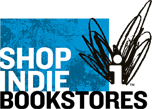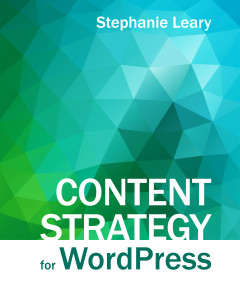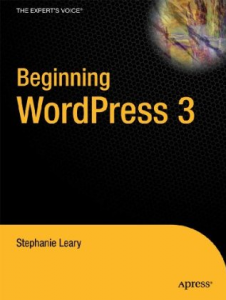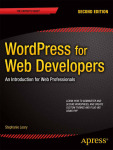
Earlier this week there was a post on The Written Nerd about IndieBound (formerly BookSense), inviting booksellers and bloggers to share ideas on how it could better serve independent bookstores. I’m writing to the marketing person, but I thought I’d ping you guys for additional ideas first.1
As you know, Bob, I design websites for authors. Many of my clients eventually ask me about linking their books to online stores: how many stores should they link to? Is it gauche to include Amazon, B&N, and IndieBound, or should they stick with Amazon alone?
While I usually encourage them to go with all three, IndieBound presents a dilemma. A large part of my role as the designer involves advocating for the readers, choosing the options that will present them with the best experience. I can’t honestly say that IndieBound offers the best experience for a prospective buyer. In fact, it’s downright frustrating. Instead of giving the reader a thorough description of the book, IndieBound instead provides a perfunctory description and then demands a zip code before divulging further information (which might or might not be useful).
Let me take an example from the current Next List on the IndieBound home page. I recall reading quite a bit about Mary Roach’s Bonk when the hardcover was published. Let’s look at the information I get from IndieBound and then from the nearest ‘local’ store (which is in fact 80 miles away, but that’s another story).
The review from the Brookline Booksmith seller is not terrible, but it’s terribly generic for one of the most quotable books of the year. The blog and mainstream reviewers played up the book’s quirky approach to the subject, quoting liberally from a seemingly endless series of amusing anecdotes. And then there’s IndieBound’s official description:
The bestselling author of “Stiff” turns her outrageous curiosity and infectious wit on the most alluring scientific subject of all: sex. 16 illustrations.
… Seriously? That’s it?
Unfortunately, the Katy store site does little to enlarge upon the information IndieBound provides.
Compare to the two reviews on Amazon’s product page.
Honestly, which site provides you with a more complete, accurate description of this book?
I chose Bonk not only because I was somewhat familiar with it, but because its review and description were typical specimens. As we see with the Katy store, small stores have a hard time maintaining decent websites at all, let alone filling them with informative book descriptions and reviews. IndieBound needs to compensate for this by providing more centralized information about the books, not less. In fact, it could provide smaller stores with even better product information than Amazon does. Here are a few ideas off the top of my head:
- Allow reader reviews, as Amazon and B&N do
- Reprint the book’s jacket/cover copy or the description from the publisher’s catalog (Amazon does this for some books, but not all)
- License the same reviews Amazon is using (at least even the playing field)
- Get reviews from more targeted but less well-known publications, like Romantic Times and Locus
- Print reviews from additional indie booksellers, not just one per book
- Invite bloggers to contribute reviews, or even set up a trackback URI for each book so bloggers can automatically ping the book page when publishing a review2
- Solicit reviews from LibraryThing’s Early Reviewers
- If possible, get an excerpt from the publisher
I would also suggest adjusting the book page design so IndieBound provides information about the book before asking the reader for their zip code. Looking at the Bonk page on my laptop, I get first the title and book cover, links to buy or add to my wish list — and then, on the right, a ton of stuff that has nothing to do with the book I’m viewing: links to find indie bookstores, join the community, or follow on Twitter or Facebook. The information I-the-reader am after, the description and reviews, is all at the bottom of the page, well below the fold.
Increase the amount of content devoted to each book. Reduce the visual clutter on the page so the reader can find that content. That’s it! Do this, and I’ll link to IndieBound rather than Amazon despite Amazon’s discounts and affiliate programs. Why? Because as a web designer (and proxy bookseller), I want to provide the reader with as much information as possible before I leave the buying decision in her hands.
(To be honest, given the overall quality of bookstore websites, what I would REALLY like to see from IndieBound is a unified web storefront and checkout system along the lines of what AbeBooks provides for used booksellers. But let’s start small!)
To sum up, when my clients ask me which store(s) they should link to, I have to ask: how strongly do they feel about promoting independent stores and local businesses? Because that’s the only compelling reason to link to IndieBound. The potential reader is better served by a link to Amazon or B&N. In fact, the reader is all too likely to be so disappointed with the dearth of useful information on the IndieBound site that she goes off to check CNN’s headlines or her email, abandoning the purchase altogether. And as a fan of indie stores, I’m sad that IndieBound doesn’t do a better job of serving readers’ needs.
What do you think of IndieBound, in its current incarnation? How would you improve it? And as a visitor to authors’ websites, how do you feel about the way they link to bookstores?
1 On this post, I especially want to keep the conversation in one place, so I’m disabling the LiveJournal comments. Sorry for the inconvenience.
2 Incidentally, there was a great discussion over at Smart Bitches this week on the validity of reader [blogger] reviews as opposed to traditional reviewers.





Leave a Reply